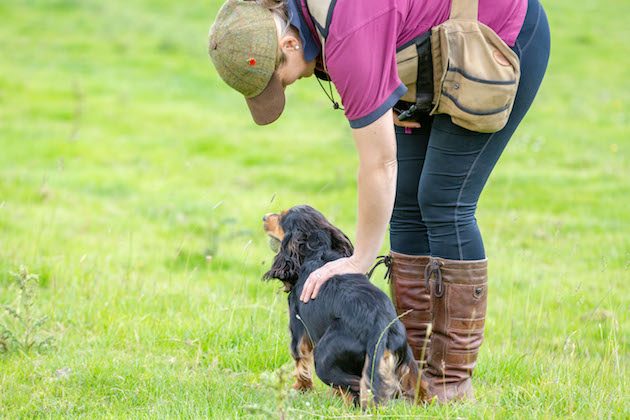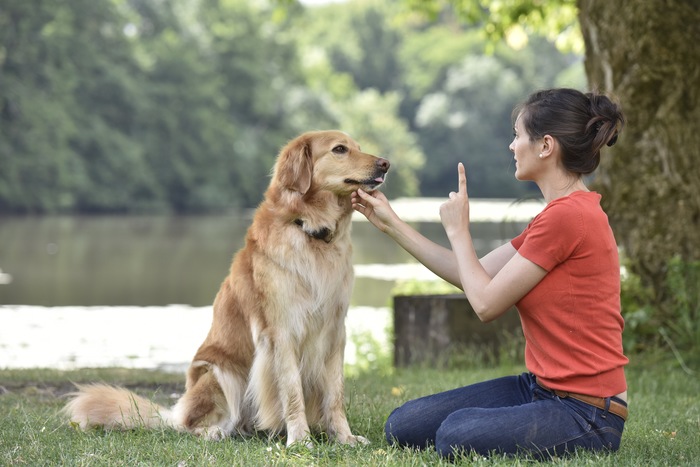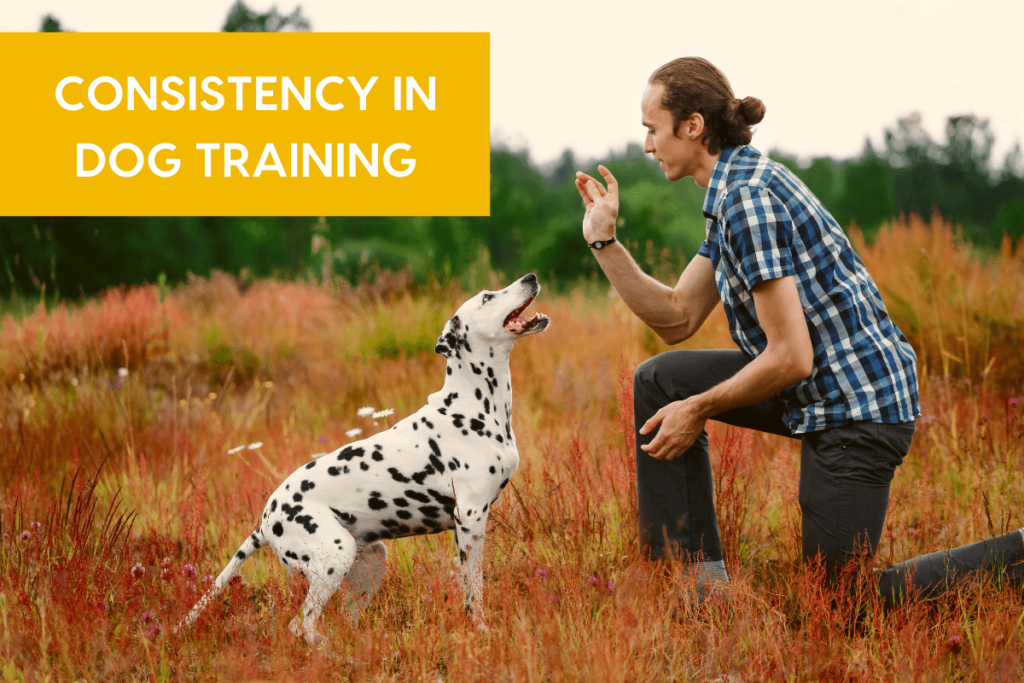Training a dog is an essential part of responsible pet ownership. It helps establish a strong bond between you and your canine companion while ensuring their safety and well-being. In this article, we will be discussing about the Top 10 Dog Training Tips.
Table of Contents
Commands Your Dog Needs to Know
Training your dog to respond to commands is essential for their safety and well-being. Here are some important commands that your dog should know:
- Sit: Teach your dog to sit on command. This is a basic command and can be used in various situations, such as before crossing the road or when meeting new people.
- Stay: Train your dog to stay in one place until you give them permission to move. This command is particularly useful when you want your dog to stay put while you attend to something or when there’s potential danger nearby.
- Come: Teach your dog to come to you when called. This command is crucial for their safety, especially if they’ve wandered too far or if there’s an emergency situation.
- Down: Train your dog to lie down on command. This command is useful in situations where you want your dog to settle down, such as during mealtime or when you have guests over.
- Leave it: Teach your dog to leave things alone when commanded. This is important for their safety, especially when they come across potentially harmful objects or substances.
- Drop it: Train your dog to release an object from their mouth. This command is essential in case your dog picks up something they shouldn’t have, like a dangerous item or a harmful food.
- Heel: Teach your dog to walk beside you without pulling on the leash. This command is particularly useful during walks or when navigating crowded areas.
- Wait: Train your dog to wait patiently before going through doorways or crossing the road. This command helps prevent accidents and teaches your dog self-control.
- Off: Teach your dog to get off furniture or to stop jumping on people. This command promotes good manners and prevents unwanted behavior.
- Speak/Quiet: Train your dog to bark on command (speak) or to stop barking (quiet). This command can be useful to alert you to potential dangers or to stop excessive barking.
Remember, consistency, positive reinforcement, and patience are key when training your dog. It’s also beneficial to seek guidance from a professional dog trainer or enroll in obedience classes to ensure successful training and a well-behaved companion.
How to Completely Deal with Dog Training Tips
Here are ten dog training tips to help you effectively train your dog:
- Start with basic commands: Begin training by teaching your dog basic commands like “sit,” “stay,” “come,” and “down.” These commands provide a foundation for further training when it comes to Dog Training Tips.
- Use positive reinforcement: Reward-based training is highly effective. When your dog follows a command correctly, reward them with praise, treats, or a combination of both. Positive reinforcement encourages good behavior and strengthens the learning process during Dog Training.
- Be consistent: Dogs thrive on routine and consistency. Use the same commands and hand signals consistently to avoid confusion. Additionally, establish a regular training schedule, setting aside short, dedicated training sessions each day.
- Keep training sessions short: Dogs have shorter attention spans, so keep training sessions brief and engaging. Aim for sessions lasting 10-15 minutes, several times a day. Short, focused sessions help keep your dog motivated and prevent boredom.
- Be patient and persistent: Dogs learn at their own pace, so be patient and persistent. Some dogs may pick up commands quickly, while others may require more time. Avoid getting frustrated and maintain a positive attitude throughout the Dog Training process.
- Train in various environments: Dogs need to learn commands in different environments to generalize their training. Start training in a familiar, distraction-free setting and gradually introduce new locations with increasing distractions. This helps your dog obey commands regardless of the surroundings.
- Socialize your dog: Socialization is crucial for a well-rounded dog. Expose your dog to various people, animals, and environments from an early age. Proper socialization reduces fear and aggression, making training more effective.
- Use appropriate training tools: Choose training tools that suit your dog’s size, breed, and temperament. Common tools include a leash, collar, harness, clicker, and treats. However, it’s important to use tools correctly and humanely. Seek guidance from a professional trainer if needed.
- Address behavioral issues promptly: If your dog displays behavioral issues like excessive barking, chewing, or aggression, address them promptly. Consult a professional dog trainer or behaviorist who can provide guidance and develop a tailored training plan.
- Make training fun: Incorporate fun activities and games into your training sessions. Dogs enjoy learning when it’s engaging and enjoyable. Use toys, playtime, and interactive games to make training a positive experience for both you and your dog.
READ ALSO:
- Boxer Dogs: Behaviour, Training And Life Span
- Training German Shepherd – 4 Ways to Train a German Shepherd
Remember, every dog is unique, and training methods may vary based on their breed, age, and personality. If you’re facing challenges or seeking specialized training, consider enrolling in obedience classes or working with a professional dog trainer who can provide personalized guidance.
Consistency in Dog Training and Making the Time
Consistency is a crucial aspect of dog training. Dogs are creatures of habit and thrive in an environment with clear and consistent rules and expectations. When training a dog, consistency helps them understand what behaviors are desirable and what behaviors are not.
Here are a few key points on maintaining consistency in dog training:
- Clear Communication: Use consistent cues, commands, and gestures when working with your dog. This helps them associate specific actions or behaviors with particular signals. For example, if you want your dog to sit, consistently use the same command, such as “sit,” and reinforce it with a hand signal.
- Timing: Consistency in timing is essential. Dogs have a short attention span, so it’s important to reward or correct their behavior immediately. Delaying rewards or corrections can confuse the dog and make it difficult for them to associate the consequence with the action.
- Reinforcement: Consistency in reinforcement is crucial for reinforcing desired behaviors. Whether you’re using treats, praise, or toys, be consistent in the rewards you offer. This helps the dog understand that certain behaviors will consistently lead to positive outcomes.
- Household Rules: Establish consistent rules for your dog throughout the household. This ensures that everyone in the family is on the same page when it comes to expectations and reinforces the training you provide. For example, if you don’t want your dog to jump on the furniture, everyone in the household should enforce this rule consistently.
- Training Schedule: Consistency in training sessions is important. Set aside regular, dedicated times for training, and stick to them. Dogs thrive on routine, and consistent training sessions help them understand when it’s time to focus and learn.
- Avoid Mixed Messages: It’s crucial to avoid sending mixed messages to your dog. If you allow a behavior one day and correct it the next, your dog will become confused and unsure about what is expected of them. Consistency in your response to their actions will help them learn more effectively.
Remember, consistency is not just about the training sessions themselves but also about maintaining consistent expectations and responses in your day-to-day interactions with your dog. By being consistent in your training methods and expectations, you can help your dog understand what is required of them and establish a solid foundation for their learning and development.
The article provided via this website should not be used to determine or treat a health problem or disease; it is not intended to offer any legal opinion or advice or a substitute for professional safety advice or professional care. Please consult your Vertinary Doctor or health care provider, attorney, or product manual for professional advice. Products and services reviewed are provided by third parties; we are not responsible in any way for them, nor do we guarantee their functionality, utility, safety, or reliability. Our content is for educational purposes only.
If you like, please share it. Sharing is usually caring.




